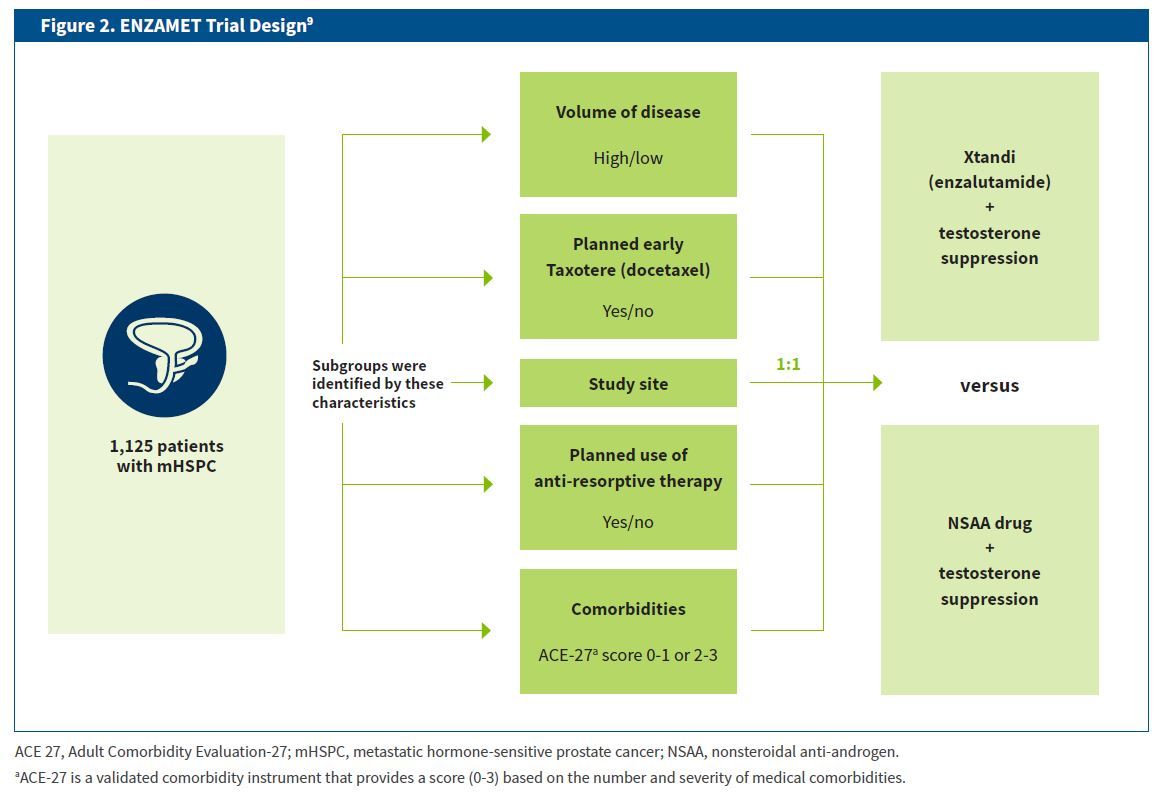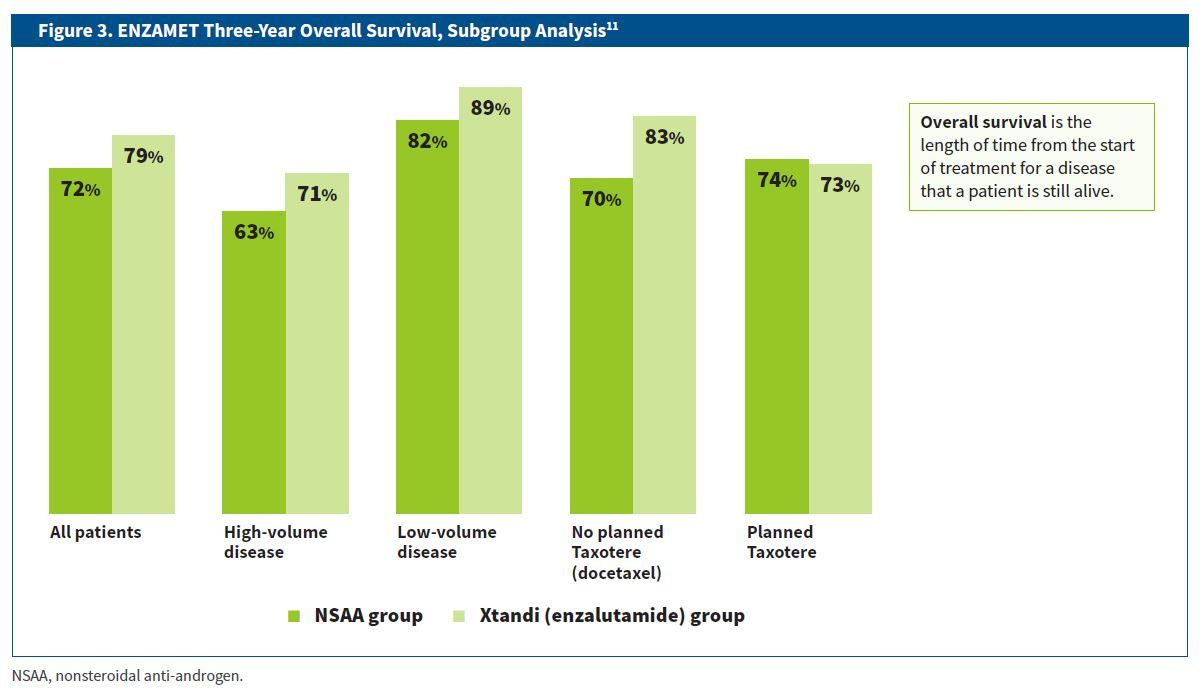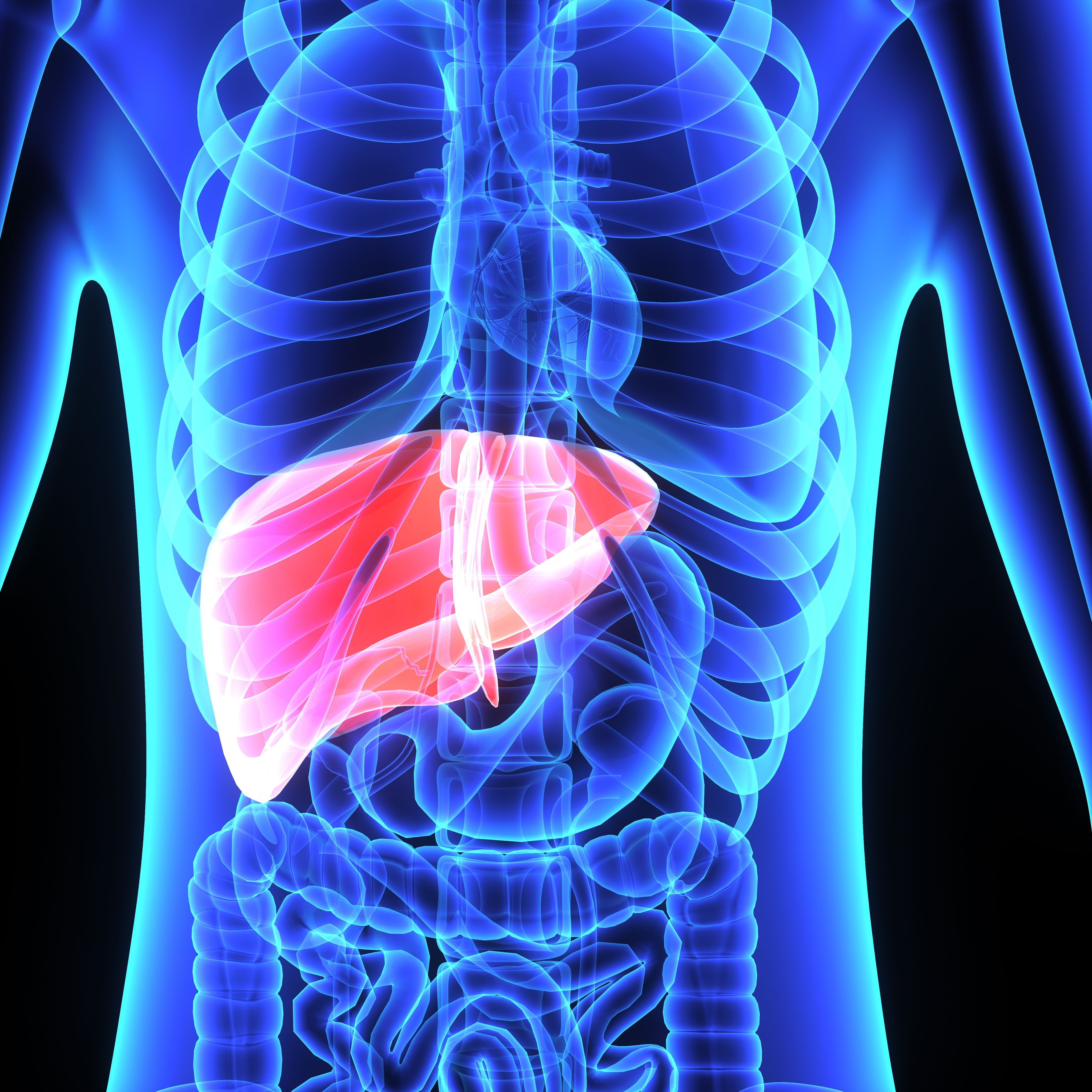Article
ASCO 2019: Results From the ENZAMET Phase 3 Trial
The Educated Patient®: Research Updates provides current clinical updates for different disease states. The following information is for educational purposes and is not medical advice.
FOR YOUR REFERENCE: What Are Clinical Trials?
Clinical trials determine whether a drug works in humans and if it is safe and effective. To find out whether a drug can be approved for use, the Food and Drug Administration (FDA) requires four phases of a clinical trial. The number of participants increases in each phase, starting from 20 to
80 people for a phase 1 trial to up to 3,000 for a phase 3 trial (Figure 1).1

- Phase 1: tests an experimental treatment on a small group of often healthy people to judge its safety and side effects and find the correct dosage.
- Phase 2: focuses on effectiveness and obtains preliminary data on whether the drug works in people who have a certain disease or condition.
- Phase 3: gathers more information about safety and effectiveness, studies different populations and dosages, and examines use of the drug in combination with other drugs.
- Phase 4: occurs after FDA approval; monitors safety and effectiveness in large, diverse populations; and collects information on long-term side effects.
FOR YOUR REFERENCE: What Is Metastatic Hormone-Sensitive Prostate Cancer?
Prostate cancer begins when cells in the prostate gland grow out of control. Almost all prostate cancers are adenocarcinomas, which develop from the cells that make the prostate fluid that is added to semen (the gland cells). The disease is more likely to develop in older men (average age at diagnosis is about 66 years) and in non-Hispanic Black men.2
Disease that has spread past the prostate into the body is called metastatic hormone-sensitive prostate cancer (mHSPC). This type of prostate cancer can be treated with hormone therapy, which means that male sex hormones, including androgens like testosterone, can be blocked or stopped to slow cancer growth.3 The disease stage precedes the development of metastatic castration-resistant prostate cancer, a condition characterized by poor outcomes and high death rates.4
Although early-stage prostate cancer usually causes no symptoms, signs of advanced disease may include blood in urine or semen, erectile dysfunction, loss of bladder or bowel control, numbness or weakness in the legs or feet, problems passing urine, and pain in the hips, back (spine), chest (ribs) or other areas from cancer that has spread to bones.5
Treatment options for patients with mHSPC include hormone therapy, which may be combined with chemotherapy or radiation; chemotherapy alone; surgery to relieve symptoms; and radiation or anti-resorptive therapies for bone metastases. Observation (watchful waiting) may be appropriate for those who are older or have other health issues and do not have major symptoms from the cancer. Immunotherapy may be used if the cancer continues to grow or spread.6
FOR YOUR REFERENCE: What Medications Were Investigated in the ENZAMET Phase 3 Trial?
Xtandi (enzalutamide) is an FDA-approved androgen receptor inhibitor indicated for the treatment of patients with nonmetastatic and metastatic castration-resistant prostate cancer. It works by blocking the action of the male hormones that prostate cancer needs to survive and grow (testosterone and androgens) by binding to the receptors to which they attach.7,8 Xtandi was designed to overcome acquired resistance to first-generation nonsteroidal anti-androgens (NSAAs) such as Casodex (bicalutamide), Nilandron (nilutamide) and Eulexin (flutamide).9 Taxotere (docetaxel), a microtubule inhibitor, is indicated to treat metastatic castration-resistant prostate cancer patients, in combination with the steroid prednisone.10
ASCO 2019: ENZAMET Phase 3 Trial
The phase 3 ENZAMET clinical trial assessed the effects of adding treatment with Xtandi to testosterone suppression in men with mHSPC compared with standard of care therapy with a first-generation NSAA and testosterone suppression. The primary end point was overall survival (OS), with secondary end points of progression-free survival (PFS) as determined by prostate-specific antigen (PSA) level, clinical PFS and safety.9,11
More than 1,100 men with mHSPC were randomly assigned to receive either Xtandi or an NSAA until disease progression or toxicity that prevented treatment. Background therapy included continuous testosterone suppression in both groups (Figure 2).9 Randomization of patients was stratified by volume of disease (high or low), planned early use of Taxotere, planned anti-resorptive therapy, ACE-27 comorbidity score and study site.9,11

Results
Xtandi lowered the risk of death in patients by 33%. Investigators determined the estimated three-year OS to be 80% in the Xtandi group compared with 72% in the NSAA group. PFS (as measured by rising PSA) was 67% in the Xtandi group versus 37% in the NSAA group, whereas clinical PFS (measured by symptomatic or radiographic progression) was 68% in the Xtandi group compared with 41% in the NSAA group. However, compared with the NSAA group, patients in the Xtandi group had a higher incidence of seizures and other toxic effects, particularly among those treated with early Taxotere.9
Subsequent subgroup analysis showed three-year OS for all patients to be 79% for Xtandi versus 72% for the NSAA group, with OS in the subgroups ranging from 71% to 89% for Xtandi and from 63% to 82% for the NSAA group (Figure 3).11

Investigators concluded that overall, earlier use of Xtandi significantly improved OS when added to standard care in mHSPC. However, the benefits appeared lower in those for whom early treatment with Taxotere was planned.11
Not all patients qualify for certain clinical trials. If you are interested in enrolling in a trial, talk with your doctor about which treatment options would be most appropriate for you.
FOR YOUR REFERENCE: Glossary of Terms
Adenocarcinoma: a type of cancer that starts in glandular cells, meaning those that would normally produce mucus
Adult Comorbidity Evaluation-27 (ACE-27): a validated comorbidity instrument that provides a score (0-3) based on the number and severity of medical comorbidities
Androgen: a type of hormone that promotes the development and maintenance of male sex characteristics
Androgen receptor inhibitor/anti-androgen: a substance that keeps androgens from binding to proteins called androgen receptors. These are found in normal prostate cells, some prostate cancer cells and in cells of some other tissues. Preventing this binding blocks the effects of these hormones in the body and may keep prostate cells from growing.
Anti-resorptive: blocking the process by which bones are broken down and reabsorbed by the body
ASCO: American Society of Clinical Oncolog
Castration-resistant prostate cancer: prostate cancer that keeps growing even when the amount of testosterone in the body is reduced to very low levels
Chemotherapy: treatment that uses drugs to stop the growth of cancer cells either by killing the cells or by stopping them from dividing. These drugs are taken by mouth or injected and enter the bloodstream so they can help fight cancers that spread throughout the body. This can affect cancer cells and normal cells.
Comorbidity: the condition of having two or more diseases at the same time
Efficacy: the ability to produce a desired outcome. In the case of cancer treatments, the desired outcome is a decrease in the number of cancer cells or the disappearance of cancer cells.
Hormone therapy: a cancer treatment that slows or stops the growth of cancer that uses hormones to grow
Immunotherapy: a type of therapy that uses substances to stimulate or suppress the immune system to help the body fight cancer, infection and other diseases. Some types of immunotherapy only target certain cells of the immune system; others affect the immune system in a general way.
Metastatic hormone-sensitive prostate cancer (mHSPC): cancer that has spread past the prostate into the body
Microtubule inhibitors: drugs that inhibit the function of microtubules, which perform a key role in mitosis (cell division). Microtubule inhibitors suppress mitotic function, effectively blocking cell cycle progression and resulting in cell death.
Observation (watchful waiting): closely following a patient’s condition but not giving treatment unless symptoms appear or change. Observation may be used in conditions that progress slowly or when the risks of treatment outweigh the possible benefits.
Overall survival: the length of time from either the date of diagnosis or the start of treatment for a disease that a patient is still alive
Primary end point: the main result that is measured at the end of a study to see if a given treatment worked
Progression-free survival: the length of time during and after the treatment of a disease that a patient lives with the disease but it does not get worse
Prostate: a gland in the male reproductive system that surrounds the part of the urethra (the tube that empties the bladder) just below the bladder and produces a fluid that forms part of the semen.
Prostate-specific antigen: a protein made by cells in the prostate gland in both normal and cancer cells. High prostate-specific antigen levels may be a sign of prostate cancer, a noncancerous condition such as prostatitis or an enlarged prostate gland.
Radiation therapy: type of cancer treatment that uses beams of intense energy to kill cancer cells
Secondary end point: additional results of interest but which the study is not specifically designed to assess
Testosterone: a hormone made mainly in the testes that is needed to develop and maintain male sex characteristics
Toxicity: the extent to which something is poisonous or harmful
References
- What are clinical trials and studies? National Institute on Aging. Accessed May 13, 2021.https://www.nia.nih.gov/health/what-are-clinical-trials-and-studies
- About prostate cancer. American Cancer Society. Accessed May 23, 2021.https://www.cancer.org/content/dam/CRC/PDF/Public/8793.00.pdf
- Metastatic hormone-sensitive prostate cancer (mHSPC) fact sheet. Urology Care Foundation. Accessed May 23, 2021.https://www.urologyhealth.org/resources/metastatic-hormone-sensitive-prostate-cancer
- Cattrini C, Castro E, Lozano R, et al. Current treatment options for metastatic hormone-sensitive prostate cancer. Cancers (Basel). 2019;11(9):1355. doi:10.3390/cancers11091355
- Prostate cancer early detection, diagnosis, and staging. American Cancer Society. Accessed May 23, 2021. https://www.cancer.org/content/dam/CRC/PDF/Public/8795.00.pdf
- Initial treatment of prostate cancer, by stage.. American Cancer Society. Accessed May 22, 2021. https://www.cancer.org/cancer/prostate-cancer/treating/by-stage.html
- FDA approved enzalutamide for metastatic castration-sensitive prostate cancer. US Food and Drug Administration. Updated December 17, 2019. Accessed June 15, 2021. https://www.fda.gov/drugs/resources-information-approved-drugs/fda-approves-enzalutamide-metastatic-castration-sensitive-prostate-cancer
- Xtandi (enzalutamide). European Medicines Agency. Updated December 5, 2021. Accessed June 15, 2021. https://www.ema.europa.eu/en/medicines/human/EPAR/xtandi
- Davis ID, Martin AJ, Stockler MR, et al. Enzalutamide with standard first-line therapy in metastatic prostate cancer. N Engl J Med. 2019;381(2):121-131. doi:10.1056/NEJMoa1903835
- Taxotere prescribing Information. Sanofi-aventis U.S. LLC; 2020. Accessed May 22, 2021. https://www.accessdata.fda.gov/drugsatfda_docs/label/2020/020449s084lbl.pdf
- Sweeney C, Martin AJ, Zielinski RR, et al. Overall survival (OS) results of a phase III randomized trial of standard-of-care therapy with or without enzalutamide for metastatic hormone-sensitive prostate cancer (mHSPC): ENZAMET (ANZUP 1304), an ANZUP-led international cooperative group trial. J Clin Oncol. 2019;37(18):LBA2. doi:10.1200/JCO.2019.37.18_suppl.LBA2





